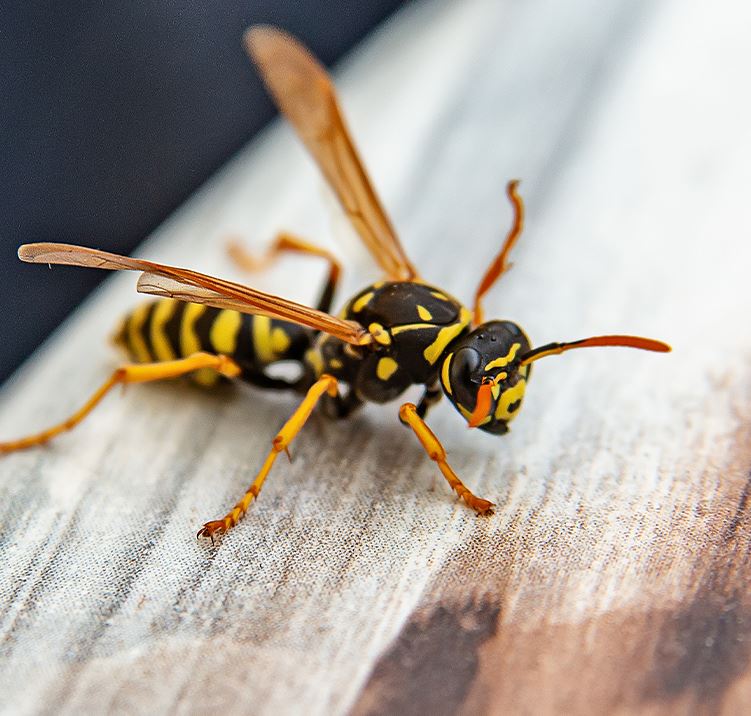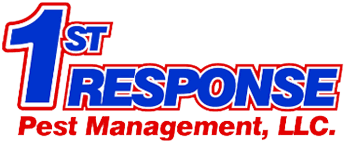-
Ron is AWESOME! I had a national pest extermination company for several years and nothing was getting accomplished. I have seen a significant decrease in the last several months that I started with 1st Response. Ron is very committed to getting the problem fixed and is very knowledgeable and a great guy! He knows his pests! :) Everyone at 1st Response is kind, courteous, and goes the extra yard!
Tina M. -
Company was very responsive to the needs that I had. My daughters room had hornets coming thru her ceiling. First response was the best response. They came right away after my internet message. Fixed the problem and offered a great service for other rodents around my house. Monthly service is a great deal. These guys know customer service and they know pest control. If you are thinking about a company that cares….this is it. Make first response your first response if you are in need of help.
Matthew P. -
I live at The Gardens Apartments. I guess before I moved in, there was an issue with bugs. I never saw any. Thank God! But the gentleman from 1st Response saw something on the traps and came back several times to take care of the issue. He was always professional, polite and handled everything with care. Kudos!! I appreciate him and the service that you provide.
Michelle W. -
Had a great experience with David - he was polite, personable, and able to find where the mice were coming in within 5 minutes. He put all the traps down and followed up on time to ensure they didn't return - highly recommend them!
Nicholas K. -
This company is great! The company I work for has been using them for years, and I have been using them recently for my home. David is so friendly when he comes in to my office, and Larry was great when he came to my home. Lisa is always the best too! So friendly on the phone!
Andy R. -
We have a mouse or two and Larry was amazing. On time, professional. He even went into my attic through a very small, inconvenient entryway in the top of a closet. He educated me about mice and inspected every inch of my place, inside and out. The office staff was great, too!
Rene L. -
We purchased a house that has had termite damage in the past. The original structure was built in 1890, and has been added onto over the years. Previous owners had repaired the termite damage, and had contracted with 1st Response to continue to maintain termite control stations and inspect for any new activity. We have continued with that existing service since purchase. Every tech that comes out is wonderful. Office staff is great as well. Everyone we have dealt with has been personable, kind, attentive and professional. Jason and Justin have been our most recent techs, and they are both great guys.
Patricia M. -
Best customer service ever! From the dispatcher to the technicians. They were super kind and accommodating to our health needs, more than willing to wear an N95 mask that we provided. Engaging conversation and thorough inspection. Even when 1 thing was missed, they apologized and made everything right. Their service was fast, but effective. The price is reasonable for all of the services you get and they were very understanding and accommodating when it came to the initial payment. I wish we had found them years ago, but if anything good can come from a mouse, it's having First Response on your side. 100%, 10 out of 10, highly recommend!
Izetta T. -
Holy smokes! They are the best! Like seriously, if you need creepy crawly help or help with other things that scurry about, they are your people. They are incredibly kind, friendly, and understanding. They have a lot of patience and explain things thoroughly. Can't say enough good things about them. We have been using them for a couple years now and have had continued reliable and excellent service.
Krista K.
Stinging Insect FAQs

What are stinging insects?
Stinging insects use their stingers to defend themselves from danger and are pests that you should always avoid. When living outside in environments that are not near people, stinging insects are important to the ecosystem, pollinating plants, flowers, and crops. Those species that are predatory help to keep populations of nuisance insects under control. However, when stinging insects nest near people, they become unwanted pests. Yellow jackets, bald-faced hornets, inground digger wasps, mud daubers, and carpenter bees are stinging insects that live in our area of Ohio.
Are stinging insects dangerous?
Stinging insects possess venom strong enough to trigger health problems in people. In the case of an attack by multiple stinging insects or in people that are severely allergic to their venom, anaphylaxis may occur. In addition to their venom, their stings are painful and may leave behind long-lasting welts.
Why do I have a stinging insect problem?
Stinging insects are outdoor pests, meaning they may place their nests in any yard or other outdoor space. These insects forage for food in gardens, yards, wooded areas, and around ponds and lakes. They also look for food in our outdoor eating areas, trash cans, and compost bins.
Where will I find stinging insects?
Where stinging insects prefer to build their nests depends on their species. They are either aerial or ground nesters.
- Yellow Jackets: Yellow jackets place their nests in the ground — under woodpiles, fallen trees, in tree stumps, and the ground nests of other small animals.
- Bald-Faced Hornets: Bald-faced hornets build paper nests and place them up off the ground. Common nesting sites include trees, utility poles, under roof eaves, chimneys, and decks.
- Inground Digger Wasps: Inground digger wasps place their nests in the ground, preferably in dry dirt in areas of direct sunlight.
- Mud Daubers: Mud daubers construct their nests out of mud and connect many short mud tubes. They like to place their nests in sheltered areas. Popular nesting sites include areas under eaves, in barns, attics, and other outbuildings.
- Carpenter Bees: Carpenter bees are solitary nesters. The females build their nests in unpainted, weathered pieces of wood — preferring softwood. Common carpenter bee nesting sites include fences, decks, wooden play structures, outdoor furniture, wood shingles, and roof eaves.
How can I prevent stinging insect infestations?
Prevent problems with stinging insects by putting into place the following stinging insect prevention measures:
- Partner with the pest control experts here at 1st Response Pest Management.
- Don’t overplant flowering vegetation on your property, especially near your home.
- Remove fallen trees, tree stumps, old woodpiles, and other debris from your yard.
- Fill any ground holes you find on your property.
- Caulk any openings you find in your home’s exterior walls.
- Replace torn or loose window or door screens to keep stinging insects out of your home.
- Keep tight-fitting lids on trash cans and compost bins and keep outdoor eating areas clean and free of food debris.
Call Now to Schedule Your Bee or Wasp Removal Service
Stinging insects can be more than just a nuisance – they can be dangerous. Hornets, bees, and wasps can sting multiple times and their venom can cause serious health issues in some individuals. For those allergic to insect stings, a swarm of these pests can be deadly. That's why it's important to get rid of them as quickly and safely as possible.
Call 1st Response Pest Management now at (614) 591-7767 to request a service quote for your next bee or wasp control service in Columbus.

Today! Request Your Free Custom Quote

Serve
-
Bexley
-
Blacklick
-
Canal Winchester
-
Clintonville
-
Columbus
-
Delaware
-
Dublin
-
Gahanna
-
Galena
-
German Village
-
Grandview Heights
-
Grove City
-
Hilliard
-
Jerome
-
Johnstown
-
Lewis Center
-
Marysville
-
New Albany
-
Pickerington
-
Plain City
-
Powell
-
Reynoldsburg
-
Sunbury
-
Upper Arlington
-
West Jefferson
-
Westerville
-
Whitehall
-
Worthington










